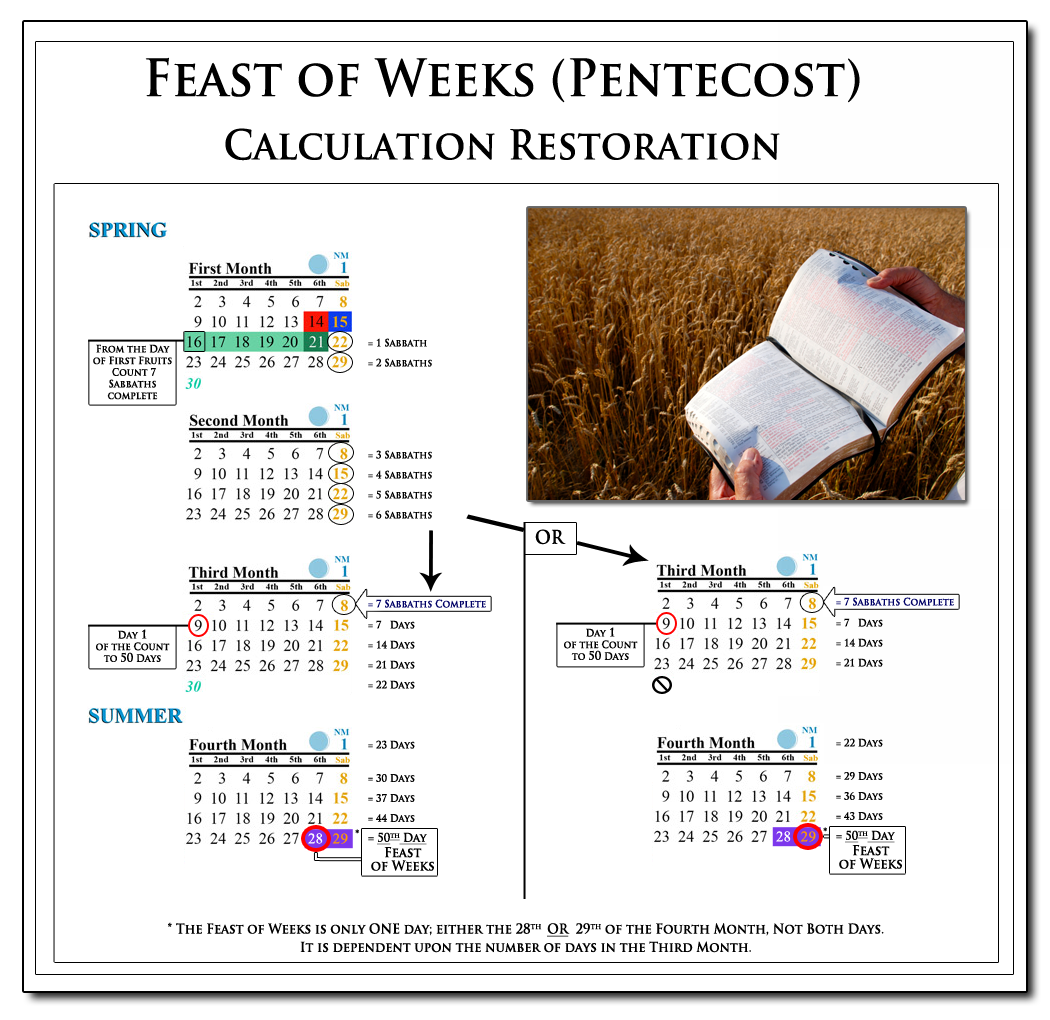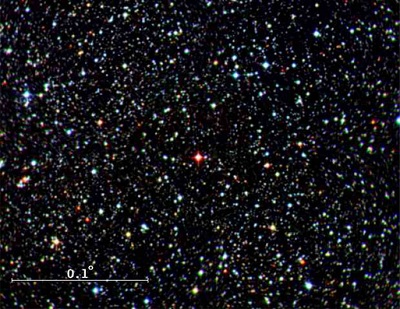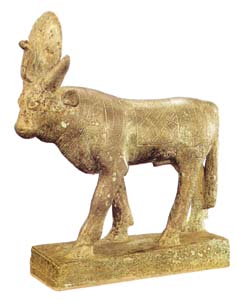
In recent years, the knowledge of the Creator's calendar and the seventh-day Sabbath calculated by that calendar, has grown and spread. Various objections have been raised against this truth. However, when these objections are carefully analyzed in the light shining from Scripture and the historical record, the facts support that the true Biblical Sabbath can only be found by using the luni-solar calendar of Creation. All other worship days, calculated by all other calendars, are counterfeits.
OBJECTION #1: "The luni-solar calendar might work well in a perfect climate if you're living near the equator. However, it does not work if you live near the North or South poles."
ANSWER: The beauty of the Creator's calendar is that it is as perfect for the North or South poles as it is for the equator.
The new year on the luni-solar calendar begins in the spring which is midway between the extremes of summer and winter, even in the arctic regions. 
Once the astronomical principles of luni-solar calendation are understood, the calendar for the year can be calculated from the New Moon of the first month in the Spring.
Because lunar months are 29.5 days long, a person can calculate on average every other month being a 30 day month, with all other months being 29 day months. This is probably how the early Christians did it when they were forced to hide in the catacombs or were enslaved in the mines and unable to see the sky.
Because the New Moon can be calculated with great accuracy, worship by the luni-solar calendar in the arctic regions is not a problem, either. Similar to what a Saturday-Sabbatarian does on the Gregorian calendar, one would keep holy time from rising in the morning, until going to bed that night.
The calendar of Creation is the most user-friendly calendar in existence and can be accurately used by all, regardless of where they live.
OBJECTION #2: "The Jewish Talmud clearly does not support a lunar Sabbath. It refers to what prayers are to be said 'If a New Moon falls on a Sabbath' and has special instructions for Passover, 'If the sixteenth falls on the Sabbath.' Such statements could not be made if, in fact, the Jews were worshipping on a lunar Sabbath because, according to the lunar calendar, neither New Moons nor the 16th of the month ever falls on a weekly Sabbath."
ANSWER: The Talmud was written after the destruction of Jerusalem in AD 70. While certain elements may accurately reflect Biblical truth, such points can only be established when compared with other Scriptural evidence.
During the Saviour's life on earth, the Israelites were still using the original calendar. The high priest, who was always of the ruling Sadducee class, was responsible for declaring when a new month began. The Pharisees, whose "traditions of men" the Saviour so emphatically denounced, did NOT control the calendar.
This is an extremely important point because the calendar used by Jews today to calculate their feasts is a corrupted alteration of the original calendar. It was devised by the Pharisees and they justified this change by their oral traditions.
 With the destruction of the Temple (70 A.D.) the Sadducees disappeared altogether, leaving the regulation of all Jewish affairs in the hands of the Pharisees. Henceforth, Jewish life was regulated by the Pharisees; the whole history of Judaism was reconstructed from the Pharisaic point of view, and a new aspect was given to the Sanhedrin of the past. A new chain of tradition supplanted the older priestly tradition (Abot 1:1). Pharisaism shaped the character of Judaism and the life and thought of the Jew for all the future. ("Pharisees," The Jewish Encyclopedia, Vol. 9, [1901-1906 ed.], p. 666.)
With the destruction of the Temple (70 A.D.) the Sadducees disappeared altogether, leaving the regulation of all Jewish affairs in the hands of the Pharisees. Henceforth, Jewish life was regulated by the Pharisees; the whole history of Judaism was reconstructed from the Pharisaic point of view, and a new aspect was given to the Sanhedrin of the past. A new chain of tradition supplanted the older priestly tradition (Abot 1:1). Pharisaism shaped the character of Judaism and the life and thought of the Jew for all the future. ("Pharisees," The Jewish Encyclopedia, Vol. 9, [1901-1906 ed.], p. 666.)
To use the Talmud to somehow "prove" the luni-solar calendar false, proves nothing of the sort. All that is established is that the traditions of the Pharisees triumphed after the Israelites rejected the Messiah.
Pharasaism became Talmudism . . . [but] the spirit of the ancient Pharisee survives unaltered. When the Jew . . . studies the Talmud, he is actually repeating the arguments used in the Palestinian academies. . . . The spirit of the [Pharisees'] doctrine has remained quick and vital. (Louis Finkelstein, The Pharisees: The Sociological Background of their Faith, [Jewish Publication Society of America], Vol. 4, p. 1332.)
Modern Jewish scholars base their beliefs on the Talmud which, in turn, comes straight from the doctrines of the Pharisees. The Saviour sought to free the divine law and the Sabbath from these "traditions of the elders." Basing a belief on the Talmud is to base one's belief on the very traditions the Messiah rejected.
OBJECTION #3: "The word 'week' comes from the word seven. Obviously, this refers to a repeating cycle of seven days! Besides, Saturday is when the Jews worship!"
ANSWER: The Hebrew word shabuwa means, literally, "sevened" because the Hebrew week was seven days long. It was translated into English as "week." Various cultures throughout time have had weeks of differing lengths.
Various parts of Africa had three, four, five, six and eight day weeks, centered around market days. In fact, in the Congo, the word for "week" is the same as the word for "market."
The Maya of the Yucatan had clusters of five-day weeks. The Muyscas of South America had a three-day week while the Chibchas had a four-day week.
The Etruscans and Romans had eight-day weeks, while the Egyptians and the Revolutionary French had 10-day weeks.
Nothing in the definition of the word "shabuwa", however, refers to the cycle of weeks. Anciently, all weekly cycles restarted at the New Moon. The fact that the modern week is a continuous weekly cycle can be attributed to a variety of factors, but NOT to the original calendar of Creation.
One Jewish scholar, a professor at Rutgers University, exulted:
A continuous seven-day cycle that runs throughout history paying no attention whatsoever to the moon and its phases is a distinctively Jewish invention. Moreover, the dissociation of the seven-day week from nature has been one of the most significant contributions of Judaism to civilization. . . . it facilitated the establishment of what Lewis Mumford identified as “mechanical periodicity,” thus essentially increasing the distance between human beings and nature. Quasi weeks [weeks whose cycle restarts with the New Moon] and [continuously cycling] weeks actually represent two fundamentally distinct modes of temporal organization of human life, the former involving partial adaptation to nature, and the latter stressing total emancipation from it. The invention of the continuous week was therefore one of the most significant breakthroughs in human beings’ attempts to break away from being prisoners of nature and create a social world of their own. (Eviatar Zerubavel, The Seven Day Circle: The History and Meaning of the Week, p. 11)
This statement is nothing more than an admission of apostasy. It should be understood in the context of Jewish admission that modern Judaism is the spiritual descendent of the Pharisees whose "traditions" and "adaptions" and "prevarications" the Saviour denounced.
OBJECTION #4: "It is impossible to count the Pentecost on the Luni-solar calendar."
ANSWER: On the contrary, the only way to correctly count to Pentecost is by using the luni-solar calendar, because only by using the Biblical calendar can all the requirements for calculating it be met.
Scripture provides three time-parameters that must be met in order to correctly count to Pentecost. These are clearly given in Leviticus 23:15 & 16:
"You shall also count for yourselves from the day after the Sabbath that you bring the Wave-sheaf, seven Sabbaths. They must be complete. Then after the seventh Sabbath, you shall count fifty days . . . " (Leviticus 23:15-16, Fenton)
The three requirements as set forth in Scripture are:
 Seven Sabbaths complete provides seven complete weeks, starting on Wave Sheaf.
Seven Sabbaths complete provides seven complete weeks, starting on Wave Sheaf.
On the day after the seventh Sabbath, the count to fifty days is begun. This will take you to either the 28th or 29th of the Fourth Month depending upon the number of days in the Third Month, or lunation. (See Chart below.) This makes the entire count from Wave Sheaf roughly 100 days which is what we should expect given that the feast of weeks revolves around the firstfruits of the summer wheat harvest and wheat takes roughly 100-120 days to mature, about four months. (See Leviticus 23: 17-20.)
"The great feature of the celebration [Feast of Weeks] was the presentation of the two loaves made from the first-fruits of the wheat harvest." (Pentecost, Smith's Bible Dictionary)
Yahushua alluded to this truth when He made this statement shortly after the Passover:
"Do you not say, 'There are still four months and then comes the harvest'?" (John 4:35, NKJV)
Historians and Biblical scholars all agree that the Feast of Weeks also stands as a memorial of the giving of the Law on Mt. Sinai.
"The day of Pentecost was kept by the Jews also as a festival to commemorate the giving of the law on Mount Sinai." (Barnes' Notes on the New Testament)
"The feast of Weeks was held in remembrance of the giving of the law..." (Matthew Henry Concise)
"Feast of Pentecost, or of Weeks . . . when the first-fruits (specially of wheat) were presented; commemorative also of the giving of the Law on Mount Sinai." (History Of The Jewish Nation)
If one was to simply count 50 days from the Wave Sheaf offering during Unleavened Bread, then Pentecost would be celebrated well before the children of Israel had even reached Sinai. However, when we use the luni-solar calendar, we see the timeline laid out in Scripture that proves the Biblical and historical account of Pentecost being a memorial for the giving of the Law.
Seven [lunar] Sabbaths complete will always fall on the 8th of the Third Month. Exodus 19:1 states that the children of Israel arrived on the same day that they had left Egypt, the 15th. Here we have the first seven days in our count to fifty. Exodus 19:10-16 states that Yahuwah told Moses to sanctify the people. Three days later, Yahuwah descended onto Mt. Sinai. Thus we have three more days added to the count, giving us a total of ten days. In Exodus 24, Yahuwah then asks Moses to come up the Mountain with the elders. Moses, Aaron, Nadab, Abihu, and the elders ascend Mt. Sinai. Yahuwah then calls Moses into the mountain. After forty days, Moses descends with the original Tables of Stone written by the finger of Yahuwah. This adds forty more days, giving us a total of fifty days!
 Further proof of this fact is that on the 49th day of the count we see in Exodus 32 that Aaron proclaims:
Further proof of this fact is that on the 49th day of the count we see in Exodus 32 that Aaron proclaims:
"Tomorrow is a Feast to Yahuwah." (See Exodus 32:5.)
Aaron was the high priest appointed by Yahuwah Himself and had beheld Yahuwah's presence on the "paved work of sapphire stone" in Exodus 24. This was no random feast, albeit the children of Israel desecrated this sacred day with their idolatrous behavior. This was the Feast of Weeks, exactly 50 days after the 7 Sabbaths complete on the luni-solar calendar! The fact is that only by counting seven complete Sabbaths on the luni-solar calendar and then adding fifty days can one arrive at the true Feast of Weeks (Pentecost)! Far from disproving the lunar Sabbath, the Biblical count to the Feast of Weeks is one of the most remarkable proofs in favor of the lunar Sabbath!
For a more comprehensive study on how to correctly count to the Feast of Weeks, refer to Pentecost | Calculation Restoration.
OBJECTION #5: "There are so many conflicting ideas for the lunar Sabbath. God is not the author of confusion. If this were true, lunar Sabbatarians would have some unity in their beliefs. As it is, they are very UN-unified, some keeping New Moon on conjunction, others on the LAST visible crescent, some on the FIRST visible crescent, others on the horned crescent and still others on the full moon! All is confusion and so, obviously, this is error."
ANSWER: This is a nonsensical argument. It could be used against Christianity itself, which has hundreds of different denominations which are not unified on the day of worship, the nature of Christ, what happens after death, and an entire host of other doctrines.
Scriptures declares that Yahuwah Himself caused the true Sabbath to be forgotten.
Yahuwah was like an enemy. He has swallowed up Israel . . . He has done violence to His tabernacle, as if it were a garden; He has destroyed His place of assembly; Yahuwah has caused the appointed feasts and Sabbaths to be forgotten in Zion. (See Lamentations 2:5, 6.)
In Hosea 2, verse 11, Yahuwah states:
I will also cause all her mirth to cease, Her feast days, Her New Moons, Her Sabbaths - All her appointed feasts. (Hosea 2:11, NKJV)
These appointed times for worship are all calculated on the same luni-solar calendar of Creation.
However, the assurance is also given that in the last days all truth is to be restored:
Yahuwah will guide you continually . . . Those from among you shall build the old waste places; you shall raise up the foundations of many generations; and you shall be called the Repairer of the Breach, the Restorer of Streets to Dwell In. If you turn away your foot from the Sabbath, from doing your pleasure on My holy day, and call the Sabbath a delight . . . . (See Isaiah 58:11-13.)
The process of restoring long buried truths began during the Protestant Reformation and continues to this day in the restoration of the Biblical calendar and its Sabbath. It is not easy to dig out long-forgotten truths. It takes time and diligent effort.
However, the fact that differing opinions are held among those seeking to reestablish lost truths is not an argument against it. Rather, all should be allowed the freedom of thought and the religious liberty to study and be convicted for themselves.
OBJECTION #6: "This lunar Sabbath theory is simply a revival of the ancient moon cult, dressed up in modern clothing. It is nothing more than worship of the moon."
ANSWER: ALL time is calculated by movement. Without the movement of the celestial bodies relative to the position of the earth, time cannot be measured.
There are four basic calendars:

The Sidereal calendar uses the movement of the stars.

Solar calendars use the movement of the sun for the year. Months are independent of anything in nature.

Lunar calendars are based strictly on the cycles of the moon. Because the lunar year is shorter than the solar year, lunations float through the solar year, as with the Islamic calendar.
Luni-solar calendars use the sun for measuring the length of the year, and the cycles of the moon for keeping track of months, or lunations.
The modern Gregorian calendar is a solar calendar. The Biblical calendar is a luni-solar calendar. This does not mean that one is worshipping the moon. It simply means that the moon and sun are both being used for time-keeping. This was the role assigned them in Genesis 1:
Elohim said, "Let there be lights in the firmament of the heavens to divide the day from the night; and let them be for signs and seasons, and for days and years . . . ." (See Genesis 1:14.)
Using the sun and the moon for measuring time does not make one a worshipper of the moon!
OBJECTION #7: "Roman senator and historian Cornelius Tacitus makes it clear that the Jews kept a Saturday Sabbath. The fact that a pagan associated Sabbath keeping with Saturn proves that the Roman week's 'day of Saturn' was the same day as the Bible's 'Sabbath day!' "
ANSWER: Scripture itself refers to the Israelites worshipping Saturn. Saturn was a planetary god.
Prayer to the planets on their respective days was a part of the worship of the heavenly bodies. (Robert L. Odom, Sunday in Roman Paganism, p. 158.)
Saturday is "Saturn's day" and it is probable that when the Israelites were worshipping this planetary god, they were doing it on his day: Saturday. However, such acts of worship were always when Israel was in gross apostasy and rebellion against Heaven.
The very first reference to Israelite apostasy over Saturn is found in Exodus 32: the apostasy at Sinai with the golden calf. When the calf was made, they said:
"These be thy gods, O Israel, which brought thee up out of the land of Egypt." (Exodus 32:4, KJV)
This golden calf was a symbol of Saturn:
The ordinary way in which the favourite Egyptian divinity Osiris was mystically represented was under the form of a young bull or calf – the calf Apis – from which the golden calf of the Israelites was borrowed.  There was a reason why that calf should not commonly appear in the appropriate symbols of the god he represented, for that calf represented the divinity in the character of Saturn, “The HIDDEN one,” “Apis” being only another name for Saturn. (Alexander Hislop, The Two Babylons, p. 45)
There was a reason why that calf should not commonly appear in the appropriate symbols of the god he represented, for that calf represented the divinity in the character of Saturn, “The HIDDEN one,” “Apis” being only another name for Saturn. (Alexander Hislop, The Two Babylons, p. 45)
Centuries later when the kingdom of Israel was split between the 10 northern tribes and the two southern tribes, the first king of the northern kingdom of Israel, Jeroboam, reinstituted the worship of Saturn.
And Jeroboam said in his heart, Now shall the kingdom return to the house of David: If this people go up to do sacrifice in the house of Yahuwah at Jerusalem, then shall the heart of this people turn again unto their lord, even unto Rehoboam king of Judah, and they shall kill me, and go again to Rehoboam king of Judah.
Whereupon the king took counsel, and made two calves of gold, and said unto them, It is too much for you to go up to Jerusalem: behold thy gods, O Israel, which brought thee up out of the land of Egypt.
And he set the one in Bethel, and the other put he in Dan. And this things became a sin: for the people went to worship before the one, even unto Dan. (See I Kings 12:26-30.)
In mercy, Yahuwah sent the prophet Amos to awaken the Israelites to the danger of this apostasy. The message Yahuwah sent through Amos asked:
Have ye offered unto Me sacrifices and offering in the wilderness forty years, O house of Israel? But ye have borne the tabernacle of your Moloch and Chiun your images, the star of your god, which ye made to yourselves. (Amos 5:25, 26, KJV)
According to The New Strong's Exhaustive Concordance of the Bible, the word Chiun is:
"[A]nother name for the god Saturn." (The New Strong's Exhaustive Concordance of the Bible, p. 194)
The details of Israel's many apostasies, as recorded in Scripture, reveal that the worship of Saturn featured predominantly in their religious rebellions.
The day upon which one worships honors the god of that day. Saturn is the god of Saturday.
Yahuwah, the Creator, is to be worshipped on His holy Sabbath day, calculated by His luni-solar calendar. Worship on any other day, calculated by any other calendar, gives honor to a god other than the Creator.
OBJECTION #8: "Various ancient historians, from Cassius Dio, to Frontinus and more, clearly stated that the Jews refused to fight on the 'day of Saturn'. Even the destruction of Jerusalem in AD 70 occurred on 'the day of Saturn.' Clearly, this was the seventh-day Sabbath even back then."
ANSWER: This objection is based on the assumption that the week in the time of these Roman historians was identical to the modern week. This is false.
The Julian calendar originally had an eight day week. As Mithraism gained popularity in pagan Rome, the planetary week of seven days also gained popularity.
It seems as if some spiritual genius having control over the pagan world had so ordered things that the heathen planetary week should be introduced just at the right time for [Mithraism,] the most popular Sun cult of all ages to come along and exalt the day of the Sun as a day above and more sacred than all the rest. Surely this was not accidental. (Robert L. Odom, Sunday in Roman Paganism, p. 157)
Historical records claiming that the Israelites worshipped on the "day of Saturn" do not prove that the modern Saturday is the Sabbath of the Bible. Rather, only one of two facts is thus proven:
 Between A.D. 79 to 81, the Emperor Titus constructed public baths at the base of the Esquiline hill in Rome. These baths, known as the Baths of Titus, had many mural designs created by the artist Famullus. On one of the walls in these baths was a stick calendar. It is one of the earliest Roman depictions of the seven-day planetary week.
Between A.D. 79 to 81, the Emperor Titus constructed public baths at the base of the Esquiline hill in Rome. These baths, known as the Baths of Titus, had many mural designs created by the artist Famullus. On one of the walls in these baths was a stick calendar. It is one of the earliest Roman depictions of the seven-day planetary week.
The significance of this calendar is that it reveals that the pagan planetary week originally began on Saturn's day. Saturday in the early Julian calendar was not the seventh-day but the first, followed by Sunday, then Monday and finally ending on dies Veneris, or the modern Friday.
It was not until the Council of Nicea in the fourth century that the seven-day planetary week was finally standardized in the Julian calendar to begin on Sunday and end on Saturday.
OBJECTION #9: "It is simply too hard! The whole world is using a different calendar. To worship by this calendar could cost my job. How would my kids go to school? You cannot live in the modern world and worship by this calendar!"
ANSWER: The one argument against truth that its lovers and promoters have never been able to deny is that obedience to truth does carry a cross: the cross of obedience.
Modern lives are regulated by the Gregorian calendar: work days, school days, weekends, vacations - all are calculated using a continuous weekly cycle. If the light of the true Sabbath is accepted, there will be separation. This is inevitable.
Jobs have been lost, marriages destroyed when one person accepts the truth and the other does not. However, this does not deter the true followers of Yahushua. Those who prize truth above all else do not wait for truth to become popular, or obedience easy. When convicted of truth, they deliberately accept the cross, agreeing with the apostle Paul that "our light affliction, which is but for a moment, worketh for us a far more exceeding and eternal weight of glory . . . ." (2 Corinthians 4:17, KJV)
The light of truth is advancing. Doctrines long buried under the error of assumption and tradition ARE being restored.
Will you choose to follow?
Will you prize truth enough to obey no matter what the cost?
An eternity of happiness awaits all who make this choice.